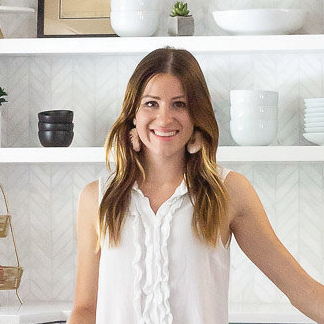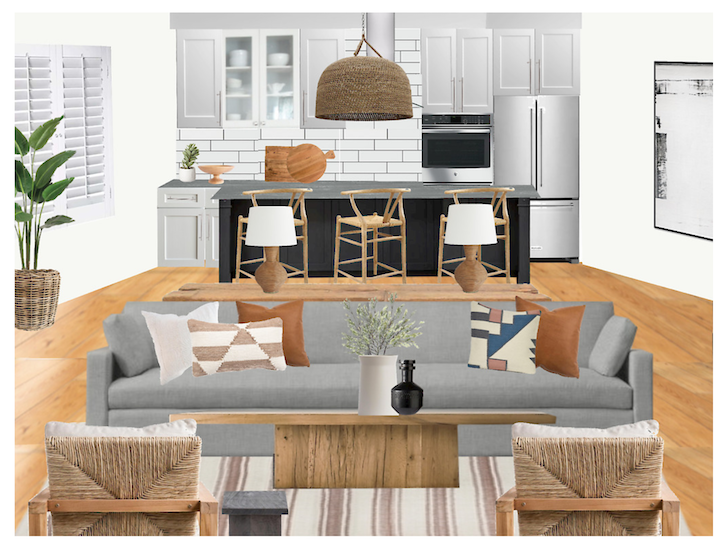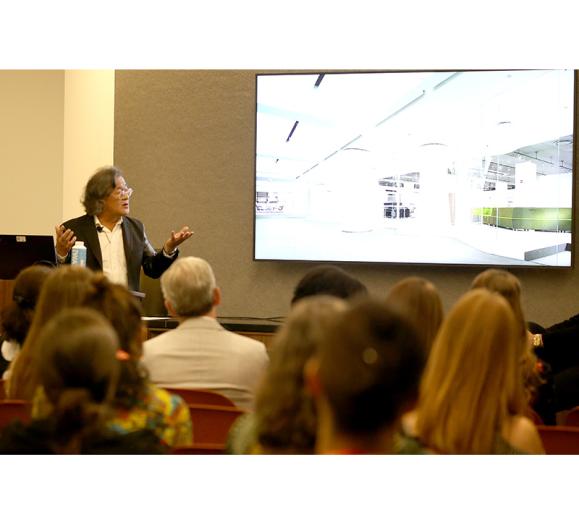Online interior design companies are taking over the internet, with options available at a variety of price points. Their premises are all relatively similar: clients fill out a questionnaire about their style and budget, then submit room photos and measurements. Designers create custom floor plans and designs for each client, complete with a shopping list to help them find the products.
We spoke to two interior designers who, in addition to running their own full-service interior design businesses, also design for online interior design platform Decorist. Because Decorist designers are independent contractors, they are able to keep their own businesses up and running while designing online on the side.
What is E-Design?
Baylee Floyd, Owner of Baylee Deyon Interior Design, started e-designing with Decorist three years ago, when she was just getting started in the industry.

“I had local clients, but it wasn’t a lot of work just starting out, so I applied for Decorist just so I could get steady work on the side as well,” she says.
For Lori Henle, a designer whose eponymous firm has been in business for more than 20 years, the opportunity for online design intrigued her in part because of the technology involved. With a background in drafting, the floor plan creation part of e-design came naturally.

“It’s a great layer in your business,” Henle says. “It just shows your versatility in terms of design and how you work. I love that you get to understand different tastes and different types of clients. You’ll be working with so many different types of people. It’s really kind of fun to experiment and kind of stretch your knowledge in the industry with how you can help make a room look the way that the client wants it to look, or even better. It’s a great addition to your portfolio and how you can show your work.”
Of course picking up any kind of side gig will help boost your income, but the rise of e-design indicates the medium will be sticking around for a while. With the popularity of Pinterest and DIY TV shows, clients want to play a more hands-on role in pulling together their own designs. Online design platforms give clients the design guidance they need, but the ultimate purchasing decisions are in their hands. This helps clients take ownership of the finished products and gives designers digital designs and before and after photos for their portfolios.
Why E-design?
1. Build your portfolio.
For recent grads or newcomers to the interior design world, online design can be a way to bolster your portfolio of design work.
“Even if you’re not getting local clients and photographing projects, you can still build your portfolio through e-designs because it still represents your design skills,” Floyd says. “Everyone can start somewhere. Putting your e-designs on social media and letting people know that you offer these services can reach people all over the country who could hire you.”
2. Hone your software skills.
Because, from the designer’s perspective, virtually all of online design happens on a computer, designers will become well-versed in floor plans and renderings, which at first might be unfamiliar territory. When Floyd started designing for Decorist, she didn’t know how to use Photoshop, but now she describes herself as a “Photoshop wizard.”
Henle welcomed the opportunity to put her existing tech skills to good use, and maybe pick up some new ones.
“The actual design and sourcing, that’s natural to me, so I feel very comfortable with that,” she says. “With floor plans and working with customers, I like that. I have a good background in tech, doing CAD drafting, so it’s easy for me. And then I got into working with other platforms, like Photoshop. You have to be able to translate design into those mediums to show your client how the room is going to look.”
3. Explore different design styles.
Design can be very regional, and exploring online design platforms can give designers who might be rooted in one place a taste of different styles from clients all over the world.
“You’re dealing with different climates, different neighborhoods, different types of tastes and different styles in where they live and economically,” Henle says. “You get that layer instead of just being in your own little community where you live and work. It really branches out to take you to all those different places, which I really find a lot of fun.”
4. Design without the hassle.
Online design services eliminate some of the headaches typically associated with full-service design. Designers use their expertise to source products, but the final purchasing and installation generally is in the hands of the client. The customer and/or e-design platform coordinates with vendors for delivery, and any damaged product, late delivery or coordination with contractors is out of the designer’s hands.
Many platforms partner with manufacturers and vendors to offer product discounts to clients. According to Floyd, Decorist handles all ordering and coordinates shipping with the vendor. Clients get free shipping and designers get a purchasing bonus when clients buy products through the platform.







